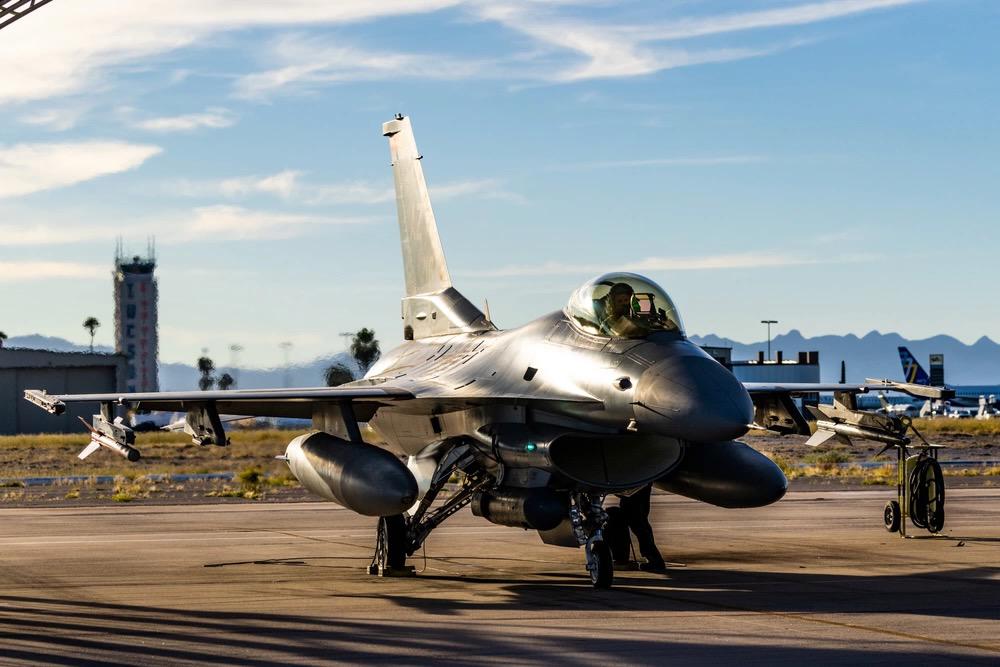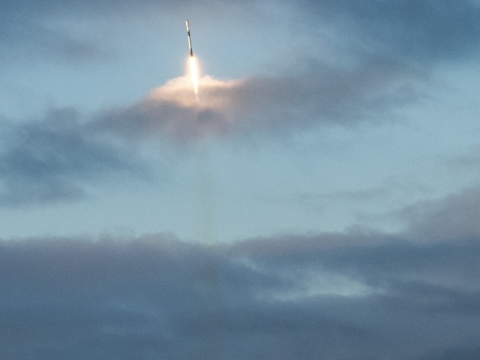U.S. Air National Guard To Train Ukrainian Pilots on F-16
The Department of Defense announced on August 24 that the United States will host several Ukrainian pilots and dozens of aircraft mechanics this fall, training those warfighters to fly and maintain F-16 Fighting Falcon aircraft, according to Brig. Gen. Patrick Ryder, USAF, DoD spokesman.
The effort was a “preemptive move,” Gen. Ryder said, to create fighter jet training capacity for Ukraine before any constraints were seen. The aircraft know-how will be combined as part of “the international effort to develop and strengthen Ukraine’s long-term defenses,” including tank, warfighting and weapon systems training.
Denmark and the Netherlands had already begun instructing Ukrainian airmen on the F-16. The United States’ program is meant to augment the existing training.
“The training provided by the United States will complement the F-16 pilot and maintenance training that's already underway in Europe, and further deepens our support for the F-16 training coalition led by Denmark and the Netherlands,” Gen. Ryder explained. “Moving forward, we will remain in close consultation with the Danes, Dutch and other allies to ensure U.S. training complements the broader coalition training effort.”
The Ukrainian pilots and aircraft maintainers will begin in September with English language instruction at Lackland Air Force Base, Texas. “Although some Ukrainian pilots have English language skills, we are anticipating that all the pilots coming to the United States will require some level of additional English language instruction, given the complexities [of the aircraft],” the general stated.
In October, the Ukrainian contingent will move to Morris Air National Guard Base, Arizona, to learn to fly and maintain F-16s from the 162nd Wing. The wing, a unit of the Arizona National Guard, is “the Air National Guard’s premier F-16 training wing,” Gen. Ryder stated. “They have deep experience in terms of training international pilots…. with, I think, 25 different nations before, so they have experience in this type of effort.”
The curriculum at Morris will be based on the pilots' and maintainers' previous aircraft experience, he noted.
“Part of this training will be assessing the individual pilots’ skill levels, which will hopefully determine how long that training will last,” the Air Force general said. “For your basic new F-16 pilot with not a lot of training, on the United States side, that training typically lasts about eight months. For a pilot that is experienced, where you are doing upgrade training, for example, that can be within a five-month range. So a lot is going to depend on those individual pilots and the assessment in terms of where they're at in that process.”

After basic flight school, undergraduate pilots advancing to fighter jets go through a series of essential courses, such as fighter jet fundamentals, formation flying, basic fighter maneuvers and weapons deployment.
“This is going to help you transition from having a basic pilot mindset to a fighter pilot mindset,” Gen. Ryder continued. “There's going to be some type of ground training involved. You've all seen the images of people going through centrifuge training to learn how to cope with G [gravitational] forces. And there will be additional training on air combat maneuvering, tactical intercepts, close air support, suppression of enemy air defenses, and then all of that leading up to your mission qualification training, which then allows your instructor to certify that you're combat-ready.”
And since the F-16 is a high-performance aircraft with significant logistics and maintenance, the service will also need to train the maintainers, as well as ground support, air traffic controllers, refuelers, and communications specialists.
As the lead countries in the F-16 training coalition effort, Denmark and the Netherlands will also coordinate the aircraft delivery when the training is complete.
“The United States will support that effort through the third-party transfer process,” Gen. Ryder clarified. “And we're talking months, not weeks. As we’ve said from the very beginning, this is about the long-term support to Ukraine. This is not about the counter-offensive that they're conducting right now.”






Comments